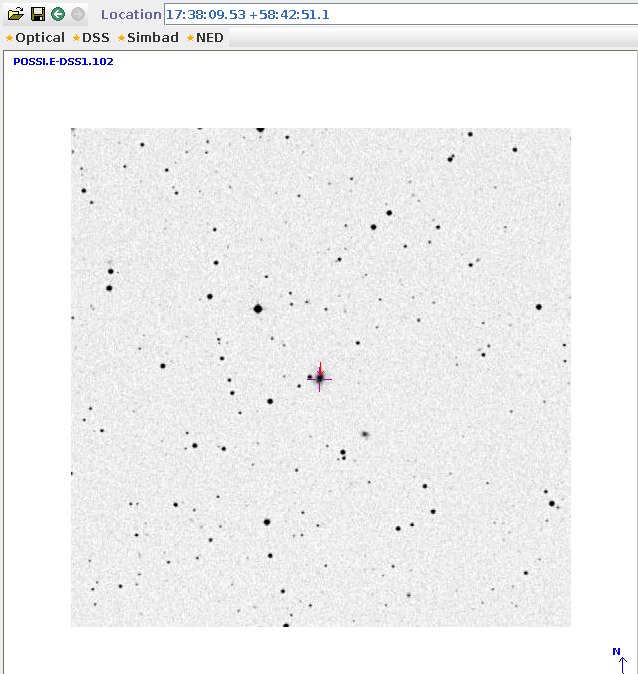
On the night of May 26/27, 2013, I observed again two of the active galactic nuclei (AGN) which are in an ongoing research project on reverberation mapping. I'm part of a team which has been monitoring the brightness of about a dozen galaxies in the infrared, with the Spitzer Space Telescope, and also in the optical with ground-based telescopes. Our goal is to look for a delay between variations in the brightness of these AGN in the optical and in the infrared. Theory says that the optical should vary first, followed a few days/weeks/months later by the infrared. Why? Well, you could read our proposals to Spitzer:
Other members of our team have been measuring the brightness of these galaxies with a number of ground-based telescopes for the past eighteen months. I've decided that perhaps I can help, too. However, these galaxies are fainter than most of the objects we study at the RIT Observatory. The question is -- can we acquire enough signal from the galaxies with our little telescopes to make the effort meaningful?
The setup was:
Notes from the night
The plan was to take image of two galaxies, NGC 6418 (which I've measured before) and IRAS 17552+6209 (which will be the first measurements at RIT). All of the galaxies in our sample are at high declination, so they are visible for most of the night at this time of year.
Target 1: NGC 6418. RA = 17:38:09.53 Dec = +58:42:51.

I found one guide star, but it was too faint to work well. Just to its west (right on the guider chip) was a brighter guide star. Be sure to choose the brighter of these possible guide stars --- use SkyMap Pro to check. I took a series of 120-second guided exposures, which were fine. Below is a stacked median image, 12 x 120 seconds in V-band. The field of view is about 15 arcminutes across, with North up, East to the left. NGC 6418 is the slightly fuzzy object just to the right of a medium-bright star at upper right.
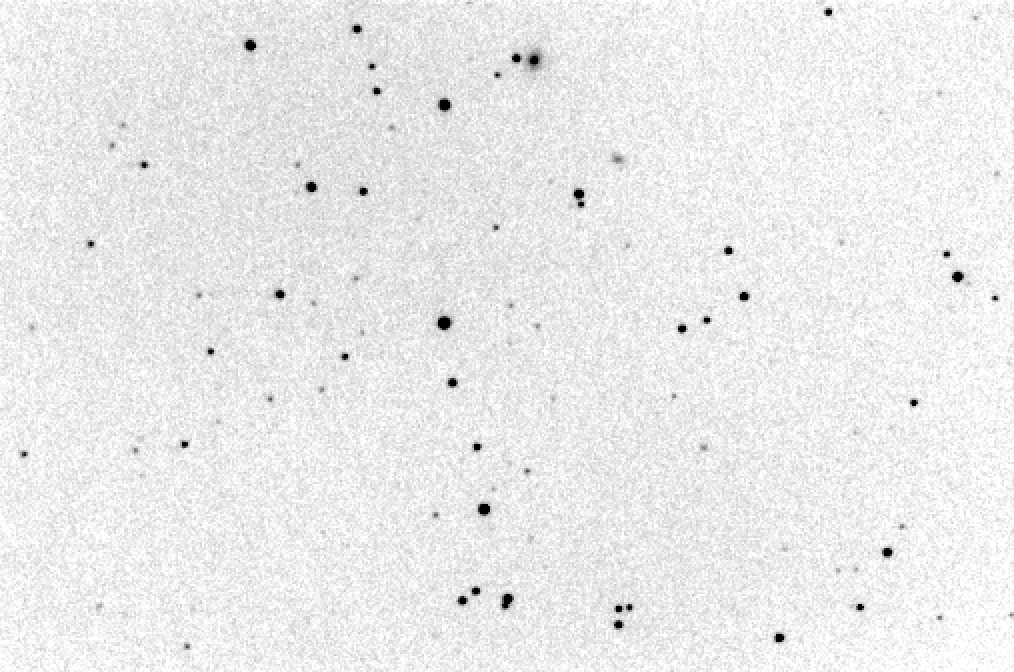
Target 2: IRAS 17552+6209. RA = 17:55:40.42 Dec = +62:09:40.6
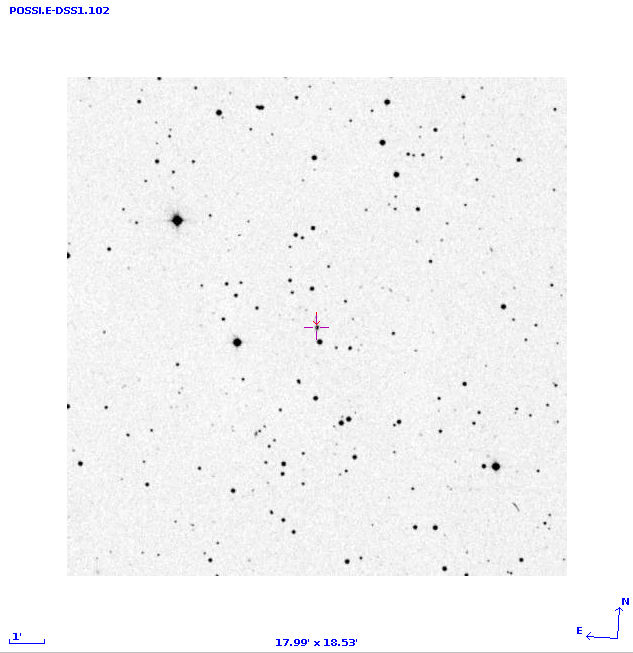
Last night, when pointing at IRAS 1755, the guider telescope field looked like this:
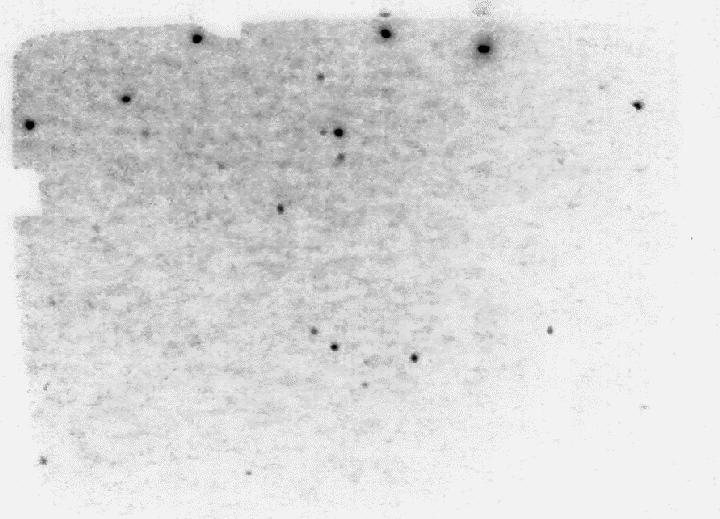
There's a pretty good guide star for this field, so I had no trouble with a set of twenty 120-second exposures. I stacked all 20 to create the median image shown below. The field of view is about 15 arcminutes across, with North up, East to the left. IRAS 17552+6209 is marked.
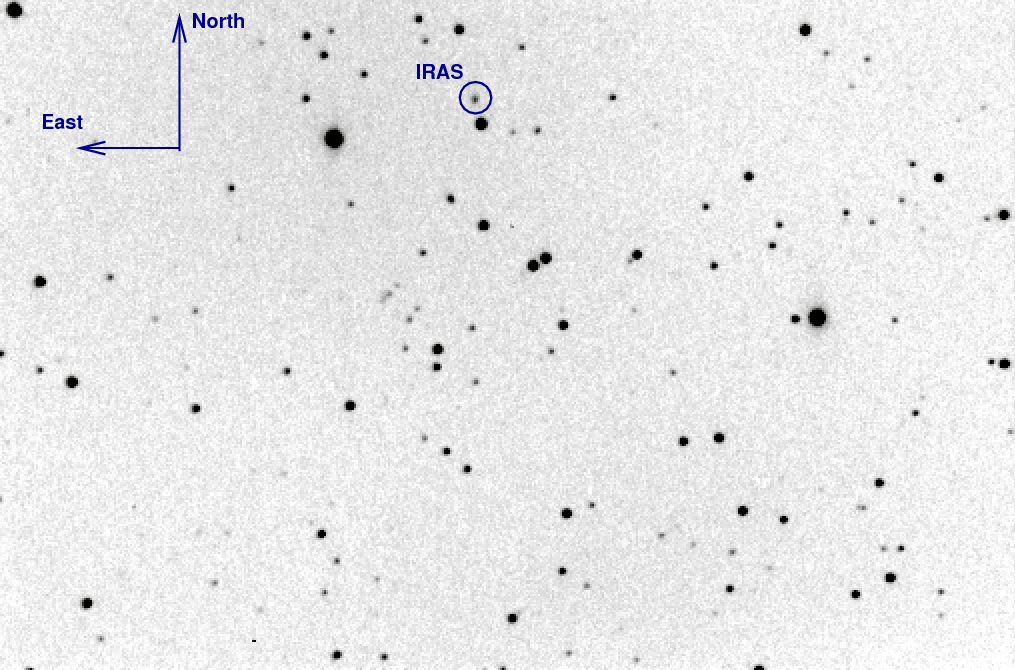
IRAS 17552+6209 is one of the fainter galaxies in the reverberation sample, so it's not clear that the RIT Observatory measurements will provide sufficient signal to be useful. A quick ensemble solution of the twenty individual 120-sec exposures indicated that the scatter in the aperture magnitudes of the galaxy was 0.13 magnitudes. That would suggest that the stack of 20 such images might yield a differential magnitude with a precision of perhaps 0.04 mag, which might be good enough for our purposes. Obviously, we'll need to test this in practice.
Last modified 05/27/2013 by MWR.